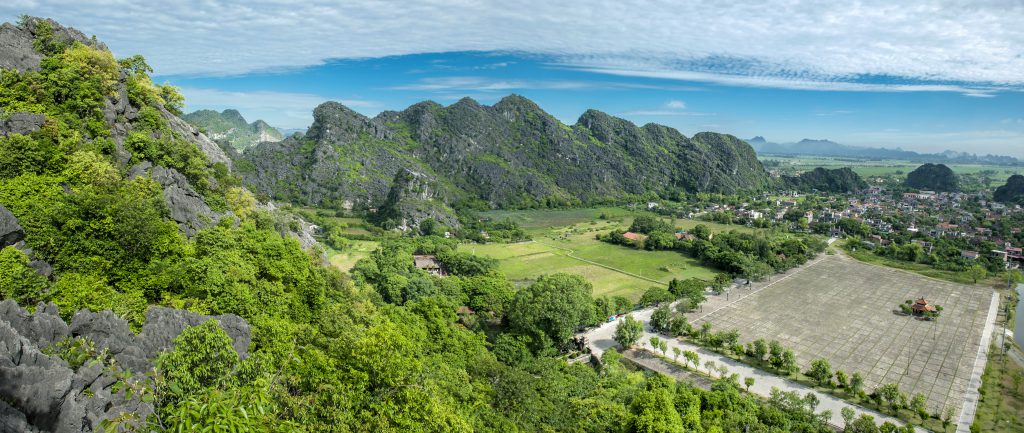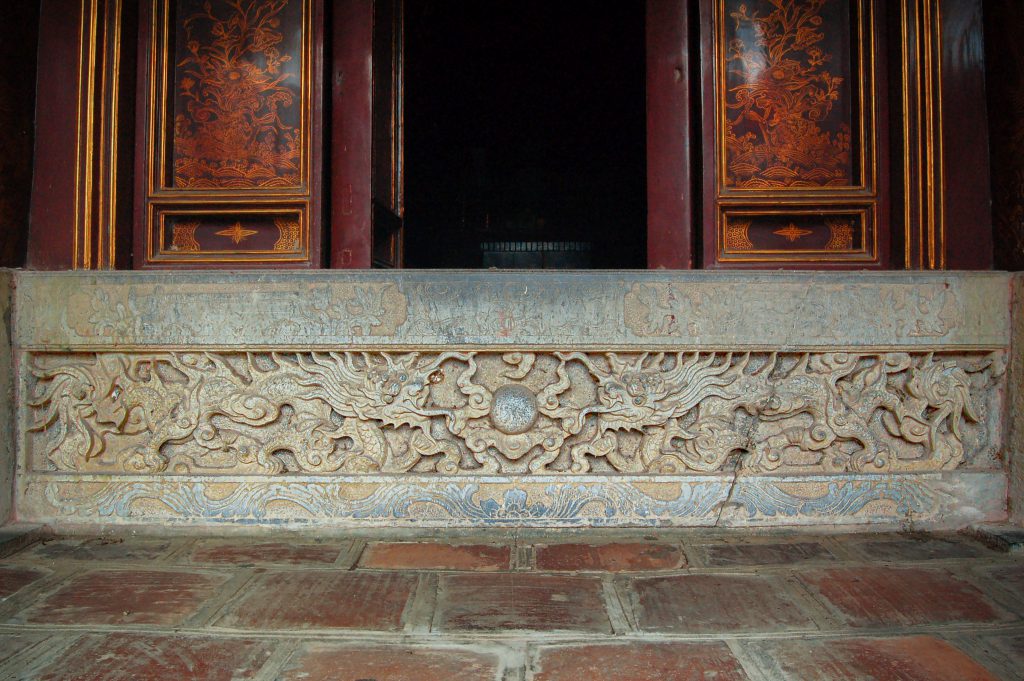Professor Dr. Trinh Sinh
Dinh Tien Hoang is a national hero, who ushered in one of the most brilliant chapters in Vietnam’s history. The book Đại Việt sử ký toàn thư (Complete Annals of Dai Viet) praised him as a king of unparalleled wisdom and courage, and the most strategic and bravest leader of his era. His greatest achievement was to unify the country against the threat of the 12 warlords’ anarchy, which had divided Vietnam into many domains.

As a boy, Dinh Tien Hoang led his fellow buffalo-herders in mock battles, using blossoming reeds as pennants. From this simple start, in 968 A.D., he built his homeland into Hoa Lu, the famed capital of Dai Co Viet. Today, this region is located in the Hoa Lu and Gia Vien districts and in Ninh Binh city, all in Ninh Binh province.
When he first built the early citadel of Hoa Lu, Dinh Tien Hoang could probably not have envisioned that one day, this place would become one of the significant “Special National Monuments” in the annals of Vietnamese history. This site gave birth to three formidable dynasties: the Dinh dynasty, the Early Le dynasty, and the Ly dynasty. Dinh Tien Hoang’s greatness lay in his construction of a centralized feudal state. He asserted his independence by taking on the imperial title and refusing to be a vassal king subservient to another nation. He was the first emperor after “a thousand-year-long Chinese domination”. Following him was Le Hoan – Dai Hanh Hoang De (literally “the Departed Emperor”), who solidified national independence, “defeated the Song invaders and pacified the Champa Kingdom”. The Ly dynasty also began its reign in Hoa Lu, with its first king Ly Thai To initially establishing his capital there before relocating it to Thang Long in 1010.
Having spent 42 years serving as the capital of three dynasties, Hoa Lu has retained many golden imprints. Foremost among its vestiges is an ancient citadel, strategically situated for military offense and defense. The Hoa Lu Citadel was at the heart of the nation at the time: at the intersection of Northwest Vietnam, the Red River Delta, and the North Central Coast. It offered convenient routes for military advances both to the north and the south, whether by land or water. In terms of defense, the citadel could halt enemy forces with its high mountainous ramparts and the natural moat formed by the Hoang Long River and its branch, the Sao Khe River. It also provided retreat routes to the mountainous region of the Northwest. The Hoa Lu Citadel was an example of Vietnamese innovation, utilizing high mountains as natural walls surrounding a valley, and connecting the mountains with brick-built and earthen ramparts to form a closed fortification. To this day, traces of 10 sections of earthen ramparts remain. Archaeologists estimate that the ramparts stood some 8 – 10m high, with the base of the walls featuring many wooden stakes deeply implanted into the ground. The insides of the walls were built with 45cm-thick bricks, with the walls’ bases reinforced with large stones and bundles of bricks. Some types of bricks were produced in specialized kilns, their outer surface bearing the inscription “Đại Việt quốc quân thành chuyên” (Bricks used in the construction of Vietnam’s military citadel).

Remnants of sections of the ramparts still exist today, dividing the area into several regions. The East Citadel (also known as the Outer Citadel) spans 140 hectares within the jurisdiction of Truong Yen commune, comprising five sections of fortress walls. This area housed the main palace and the temples of King Dinh – King Le. The West Citadel (also known as the Inner Citadel) in Chi Phong hamlet, was similar in size to the Eastern Citadel, also consisting of five sections of walls. This area served as the imperial court, housing officials, and soldiers. The South Citadel boasts many mountains, intersected by rivers and crisscrossed with numerous gullies and caves, making it strategically advantageous for defense. Nowadays, The South Citadel area has become a tourist destination within the Trang An Landscape Complex, recognized by UNESCO as a Natural World Heritage site.
The ancient capital of Hoa Lu also features many pagodas that were built during the Dinh and Early Le periods. A prime example is Nhat Tru Pagoda, which houses the large “sutra pillar” (Lăng Nghiêm) made of octagonal stone, standing 4.16m-high, crafted in 995 during the reign of Le Dai Hanh. The pillar’s eight faces are engraved with Chinese characters, featuring approximately 2,500 words that record the contents of Buddhist scriptures. In addition to the Lăng Nghiêm sutra pillar, archaeologists have also discovered 40 smaller stone sutra pillars of the same type buried within the soil of Hoa Lu.
Since 1963, various archeological excavations have unearthed remnants of the ancient capital of Hoa Lư. A portion of King Le Dai Hanh’s palace found 3m below ground revealed large floor tiles measuring 48cm x 78cm and decorated with lotus flowers, different types of bricks, tubular tile ends, duck sculptures, and various royal utensils. More recently, in 2022, widespread remnants of the foundations of palaces in the area of King Dinh – King Le’s temples were discovered, thereby determining the scale of the Forbidden Citadel and the Imperial Citadel of Hoa Lu.
Gradually, historical records detailing the reforms to develop the country under the reigns of the Dinh and Le dynasties have been substantiated through contemporary artifacts. These include the discovery of copper coins inscribed with “Thai Binh Hung Bao” (from the Dinh era) and “Thien Phuc Tran Bao” (from the Early Le era), which demonstrate the existence of a national financial system and the development of commerce. During this time, the country enjoyed peace, and many palaces were built. Step by step, archaeologists have confirmed “the erection of Bach Bao Thien Tue Palace for royal audiences, flanked to the east by Phong Luu Palace, to the west by Tu Hoa, with Bong Lai to the left and Cuc Lac Palace on the right side. After that, Dai Van Tower and Truong Xuan Palace were also constructed and the latter was used as a bedchamber for the king. Next to Truong Xuan Palace, stood Long Boc Palace with silver tiles…” (Excerpt from Complete Annals of Dai Viet).
Another important relic in the ancient capital of Hoa Lu is the tomb of King Dinh and King Le, located on Ma Yen Mountain. Over a millennium has passed, but future generations continue to remember and honor the contributions of these kings with year-round incense offerings. Golden imprints of their establishment of a centralized monarchy don’t only remain in legends, but also in historical artifacts and landmarks, which – to this day – are constantly being discovered.










